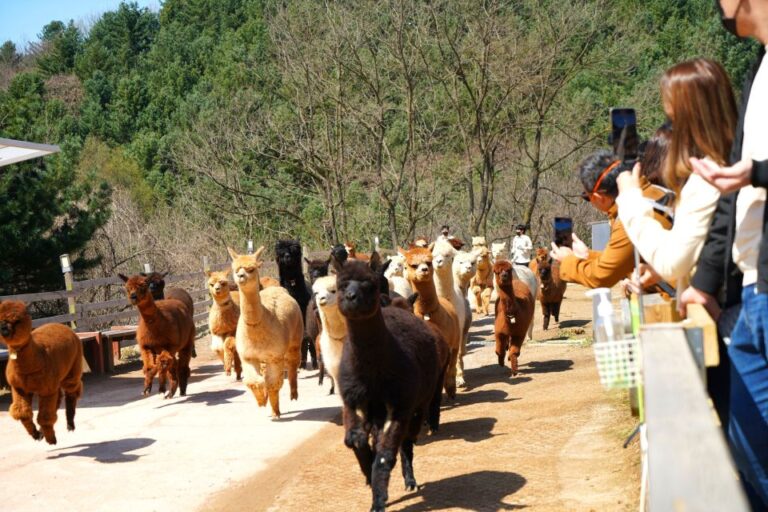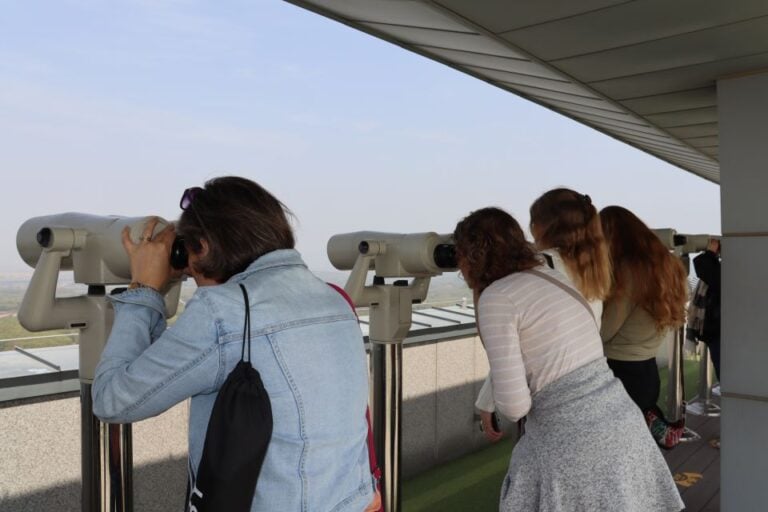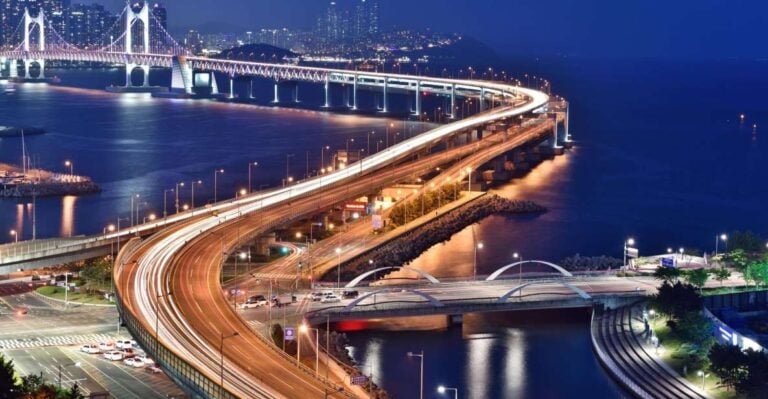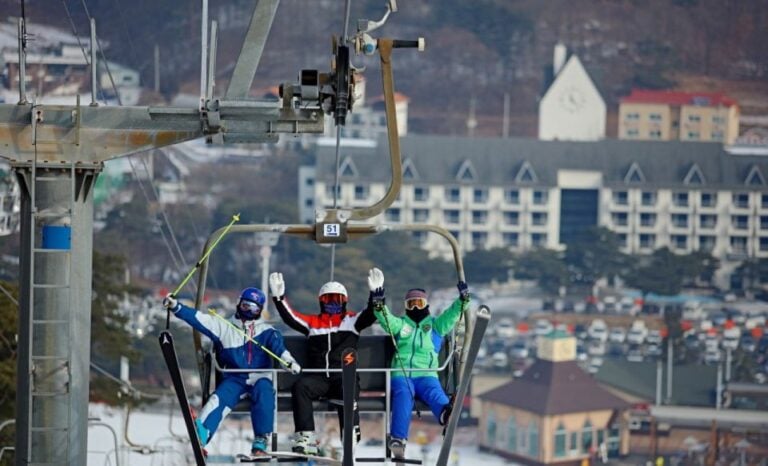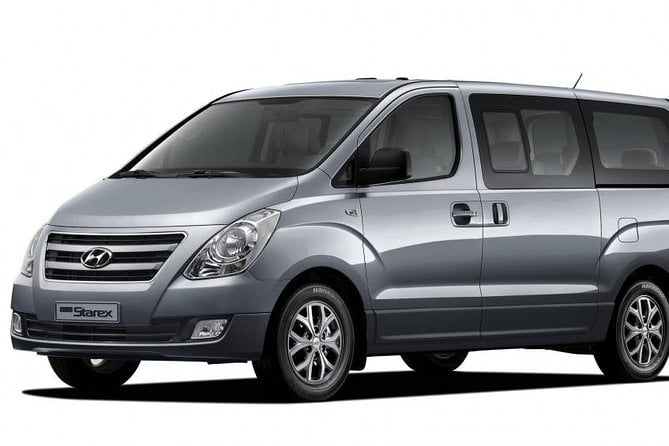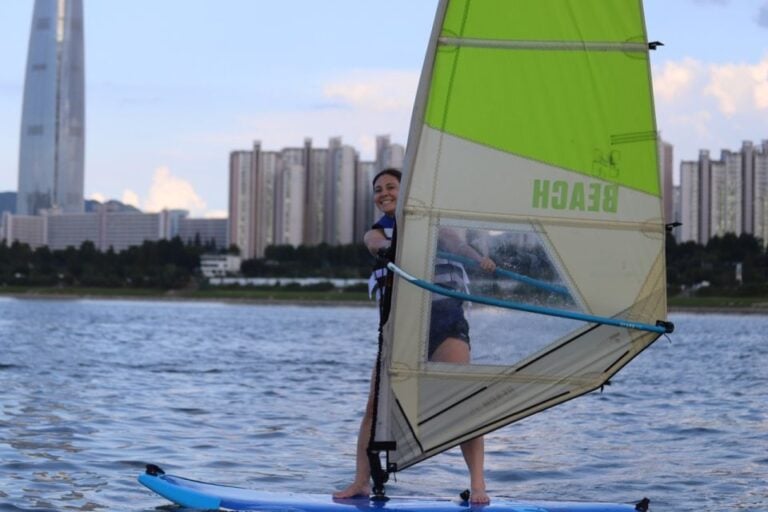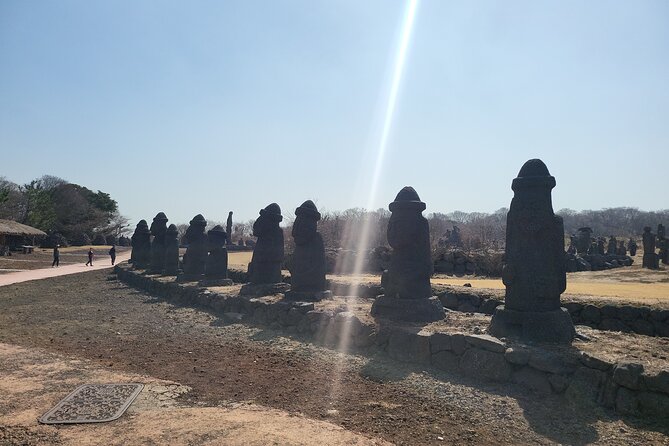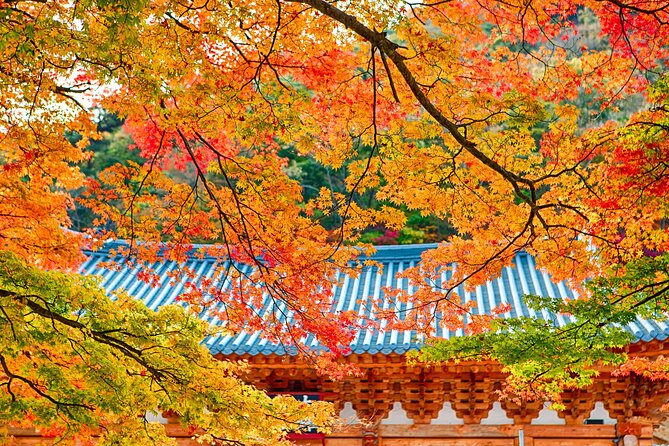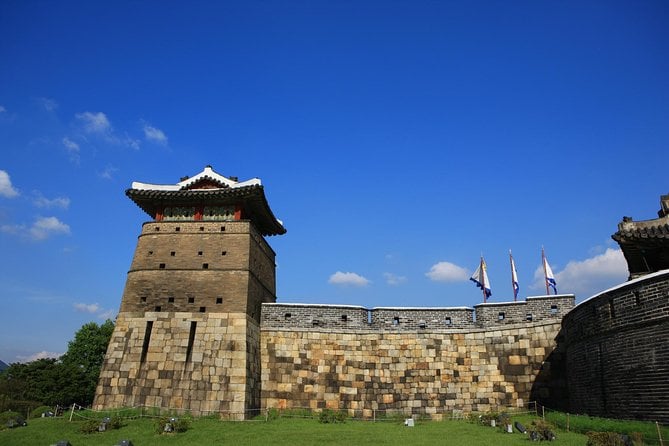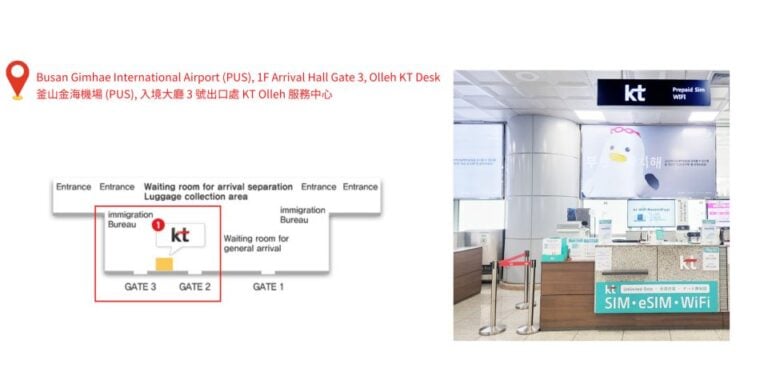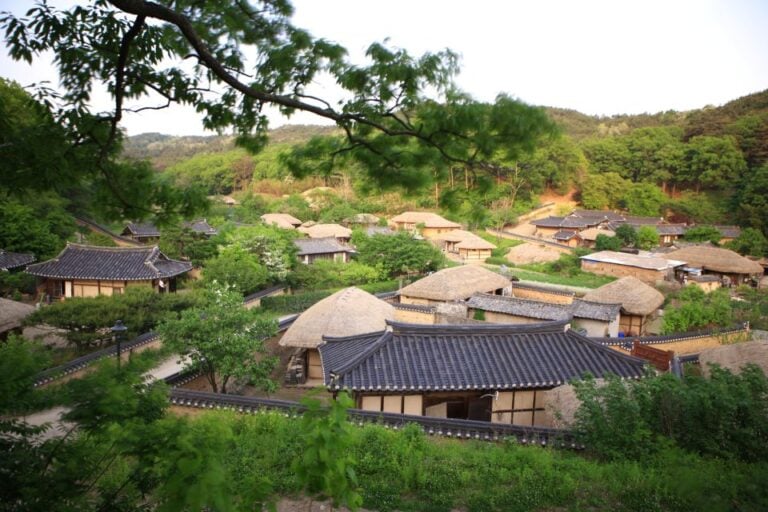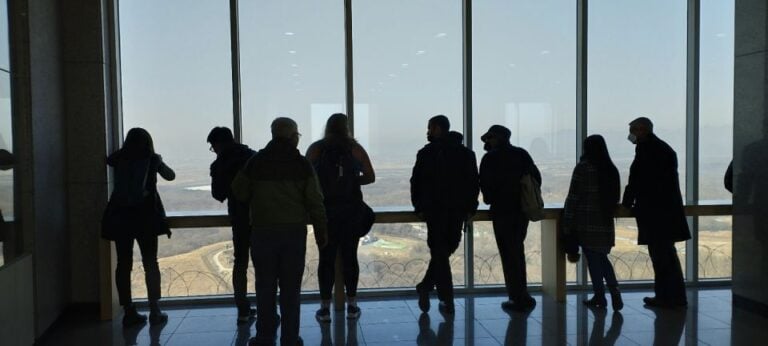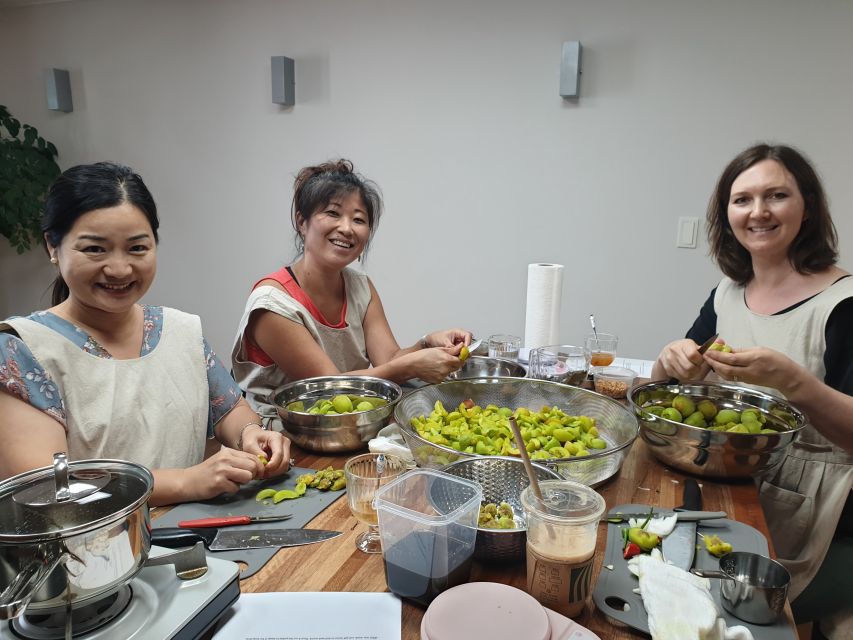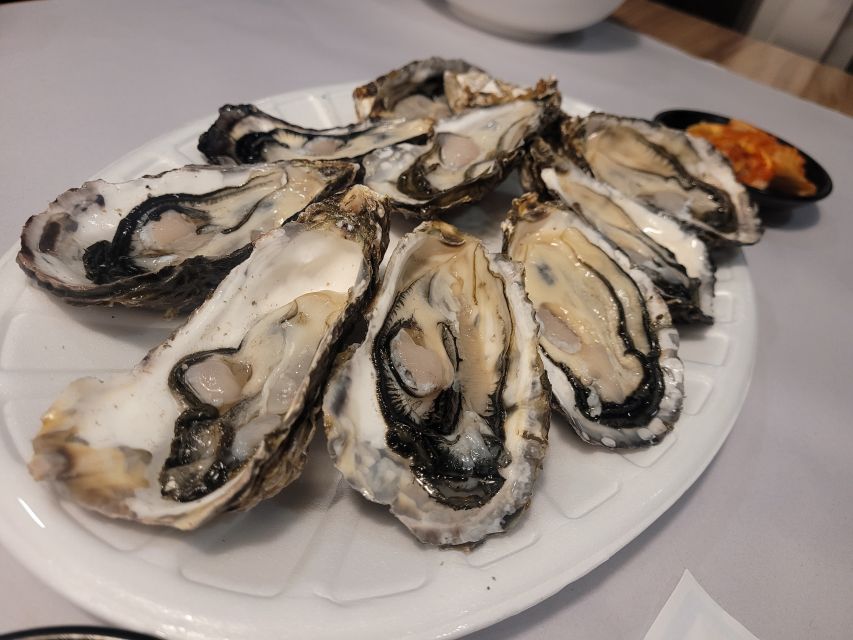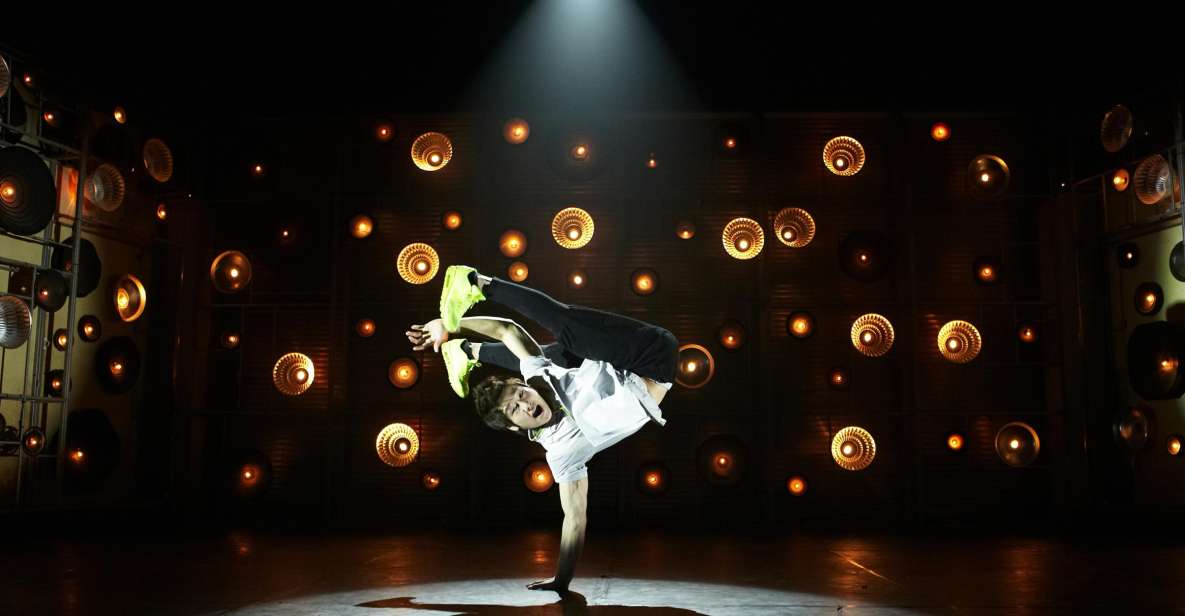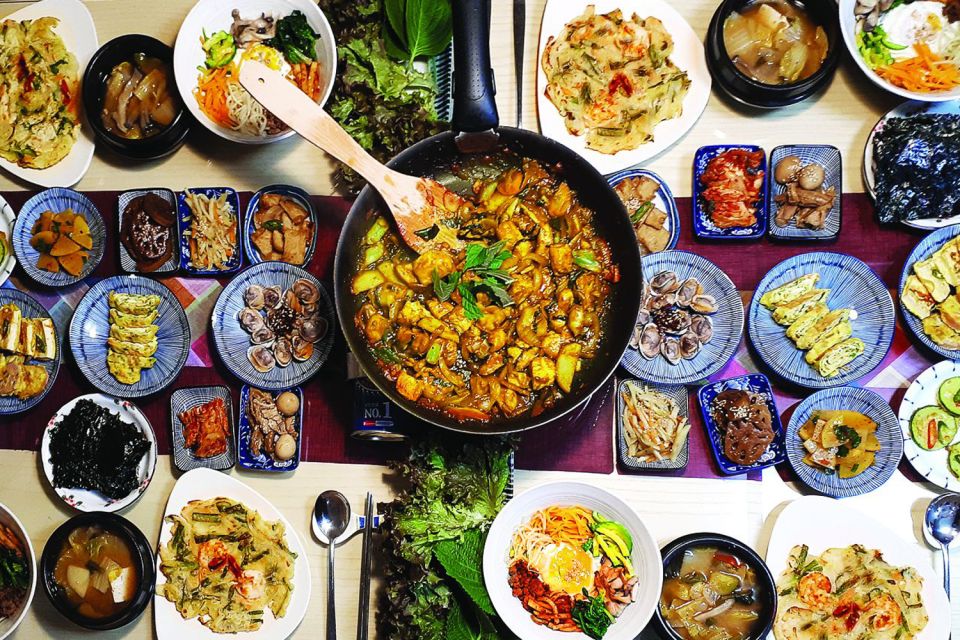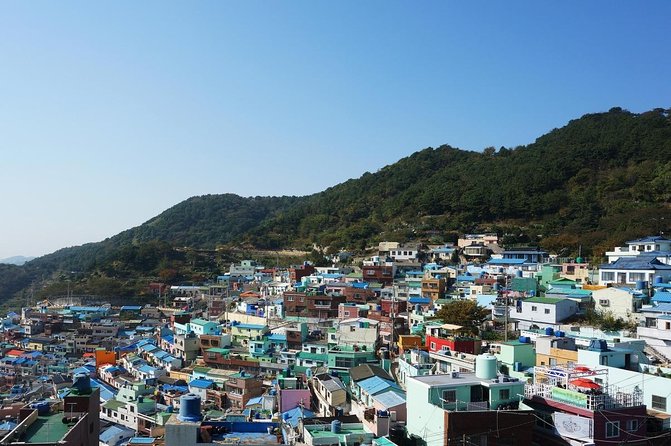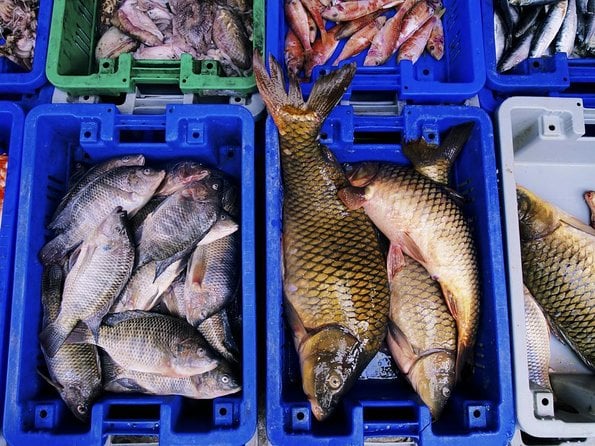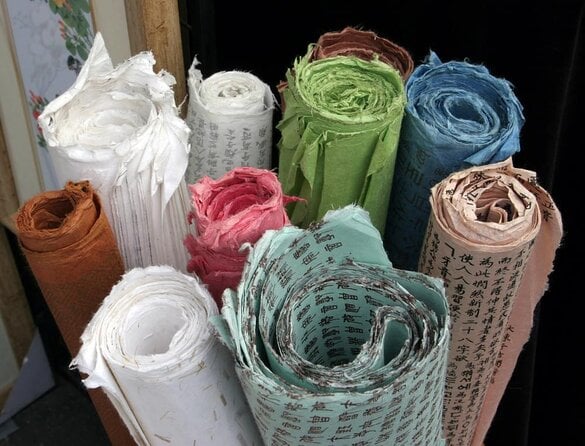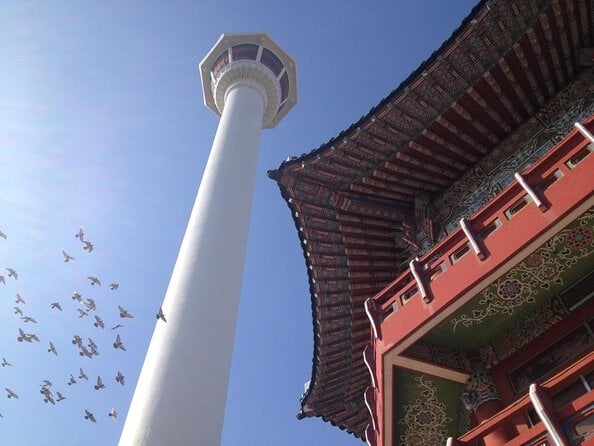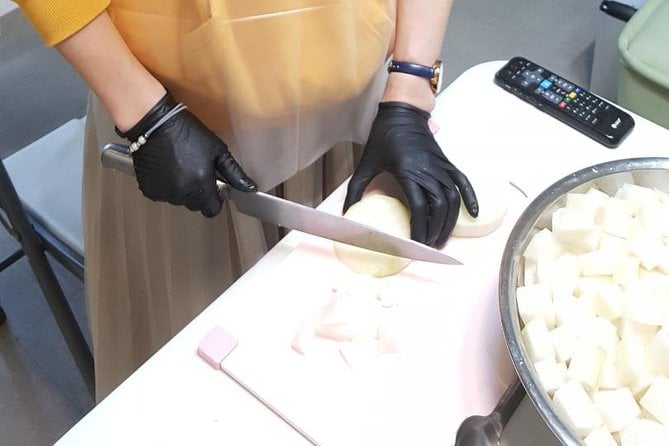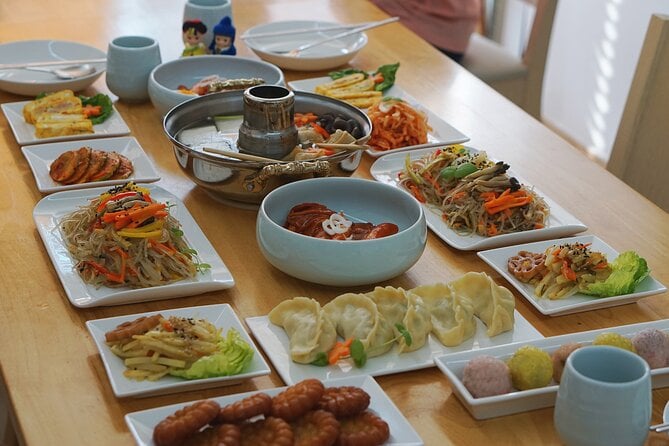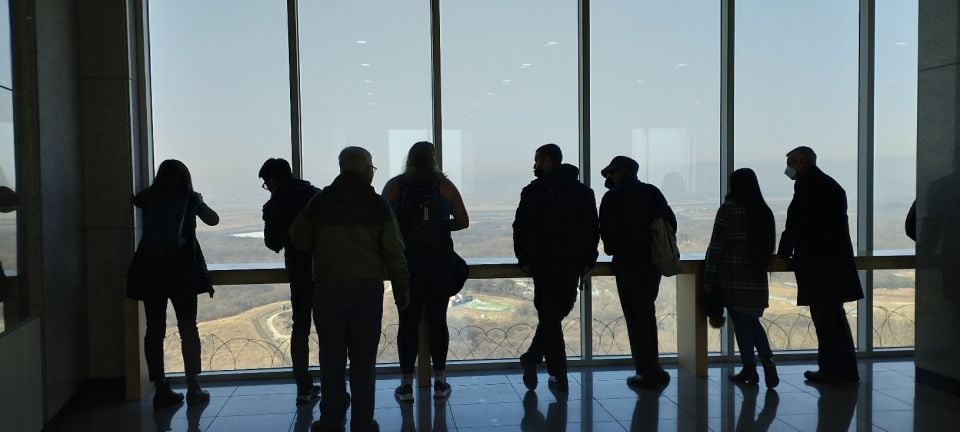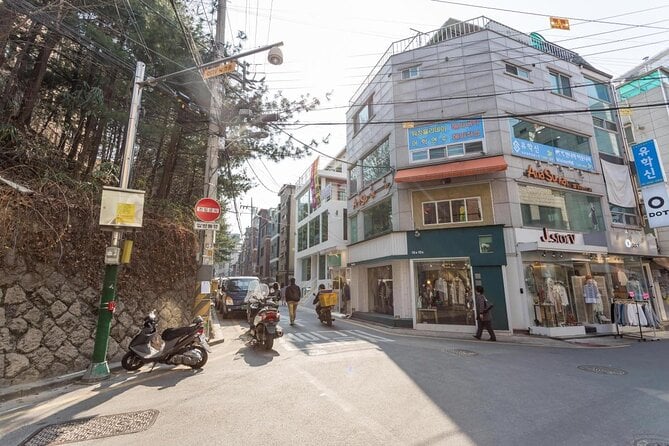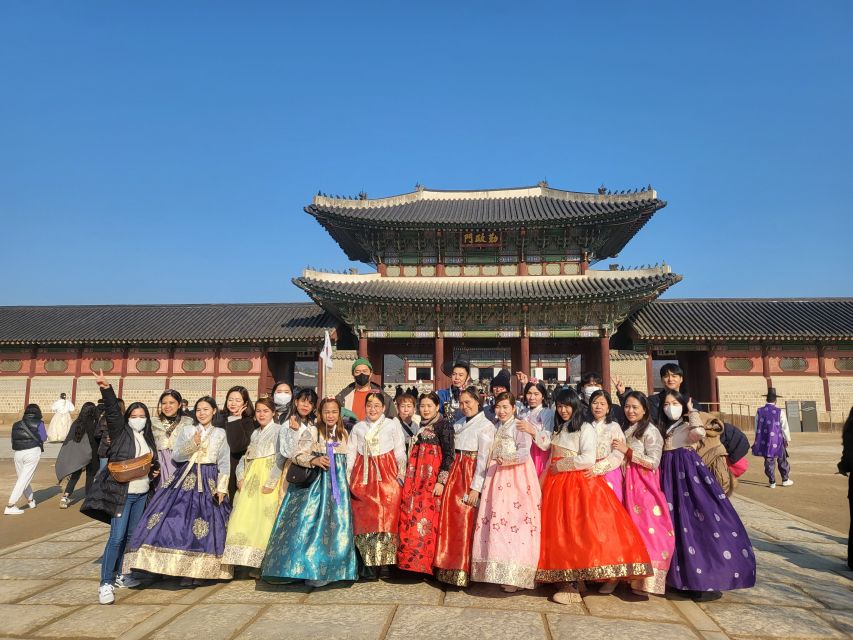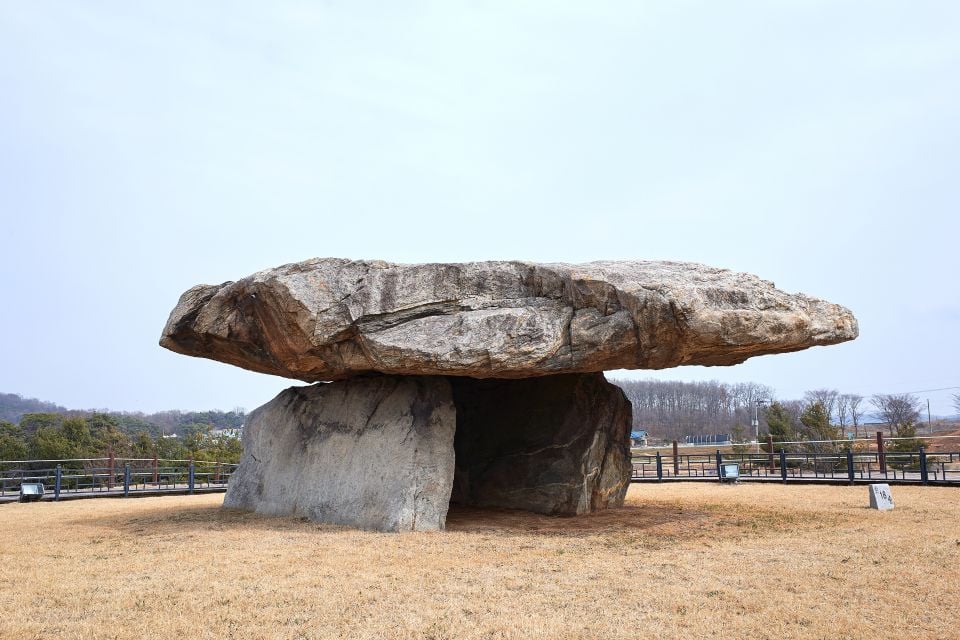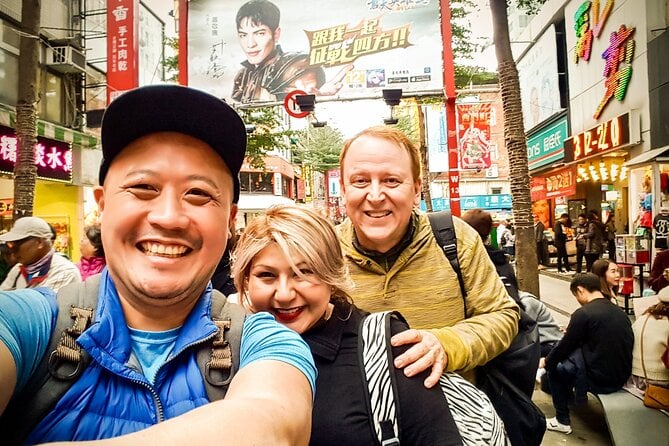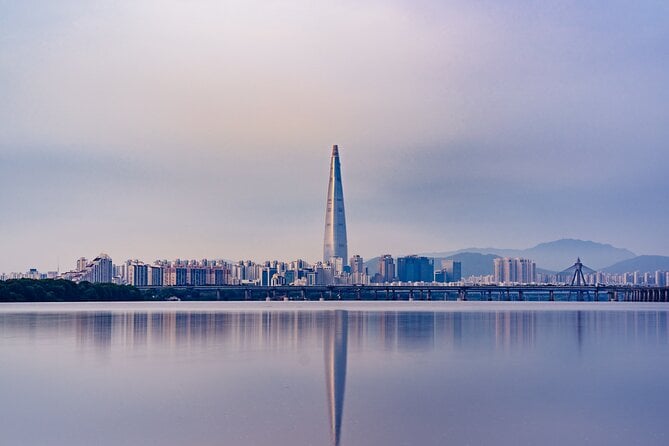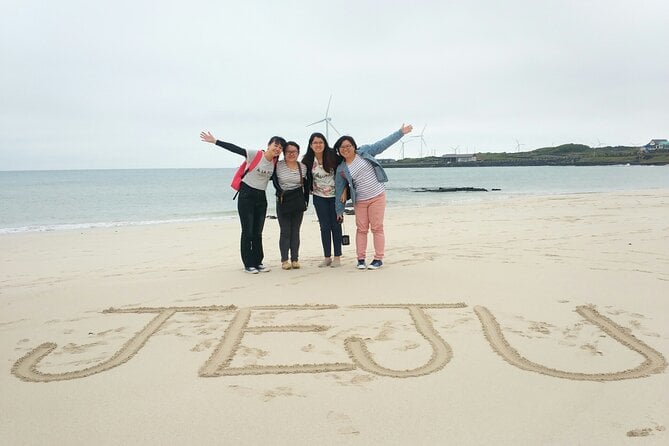South Korea is often heralded for its technological advancements, K-pop beats, and the bustling streets of Seoul. But there’s an entire tapestry of experiences that lie in the shadows of these modern marvels.
Venture past the urban sprawl and you’ll discover serene temples nestled within mountain sanctuaries, villages where time seems to have paused, and landscapes that range from the coastal beauty of Busan to the pristine tranquility of Jeju Island.
This guide aims to showcase South Korea in its entirety. We’ll walk through historical palaces standing proud amidst skyscrapers, savor age-old recipes in local markets, and feel the rhythm of traditional drum beats that still resonate deeply within this rapidly advancing nation. Join us in traversing both the modern marvels and timeless treasures of South Korea.
We will show you the best time to visit, top attractions in Seoul, and the hidden gems of Korean cuisine.
From exploring historic palaces to navigating public transportation, we’ve got you covered.
Good To Know
- Spring and autumn are the best seasons to visit Korea.
- Seoul offers a perfect mix of modern architecture and lively atmosphere.
- Historic palaces in Korea showcase cultural traditions and significance.
- Korean cuisine offers a diverse range of flavors and textures.
Best Time to Visit
If you’re planning a trip to Korea, you’ll want to time your visit just right to make the most of your experience. Understanding the best time to visit this beautiful country is crucial in order to fully enjoy its wonders. When it comes to weather conditions, Korea has four distinct seasons: spring, summer, autumn, and winter. Each season offers a unique and captivating atmosphere.
The best time to visit Korea is during the spring and autumn seasons. Spring, which spans from April to June, is known for its stunning cherry blossoms that blanket the country in a sea of pink and white. The weather during this time is mild and pleasant, making it perfect for outdoor activities and exploring the breathtaking landscapes.
Autumn, on the other hand, is equally enchanting with its vibrant foliage. From September to November, the leaves turn into a mesmerizing palette of red, orange, and yellow. The weather during autumn is also ideal, with cool temperatures and clear skies.
However, it’s important to note that the best time to visit Korea can also vary depending on your personal preferences. If you enjoy winter sports, then visiting during the winter season from December to February is ideal. The country transforms into a winter wonderland, offering opportunities for skiing, snowboarding, and enjoying hot springs.
Top Attractions in Seoul
As you continue exploring Korea, one of the top attractions in Seoul that you don’t want to miss is its modern architecture. Seoul is a city that seamlessly blends tradition with innovation, and its architectural landscape is a testament to this. From the iconic Dongdaemun Design Plaza to the futuristic Seoul Sky Tower, there are plenty of architectural marvels to explore.
The Dongdaemun Design Plaza, designed by the renowned architect Zaha Hadid, is a must-visit for architecture enthusiasts. Its unique, curvilinear structure and state-of-the-art facilities make it a hub for fashion, art, and design. Take a stroll through its futuristic halls and be inspired by the creativity on display.
Another architectural gem in Seoul is the Lotte World Tower. Standing tall at 555 meters, it’s the tallest skyscraper in South Korea. Take an elevator ride to its observation deck and enjoy panoramic views of the city skyline. At night, the tower lights up, adding to the vibrant atmosphere of Seoul.
When the sun goes down, Seoul comes alive with its vibrant nightlife. From trendy clubs to cozy bars, there’s something for everyone. Head to the lively neighborhood of Hongdae, known for its indie music scene and bustling night markets. Dance the night away or simply enjoy a drink while enjoying the energetic atmosphere.
Seoul offers a perfect mix of exploring modern architecture and experiencing its vibrant nightlife. So, make sure to add these attractions to your itinerary and get ready to be captivated by the beauty and liveliness of this dynamic city.
Exploring Historic Palaces
When it comes to exploring historic palaces in Korea, you’ll be captivated by their stunning architecture and rich history.
From the grandeur of Gyeongbokgung Palace to the serene beauty of Changdeokgung Palace, there are plenty of must-visit recommendations.
These palaces not only offer a glimpse into Korea’s past, but also hold cultural significance and traditions that are still celebrated today.
Architecture and History
Begin your exploration of historic palaces in Korea with a visit to Gyeongbokgung Palace. This magnificent palace, located in Seoul, is a testament to the rich architectural heritage of Korea. As you step into the palace grounds, you’ll be transported back in time to the Joseon Dynasty, where you can admire the intricate details of the buildings and the grandeur of the palace complex.
Korea takes great pride in the preservation of its architectural treasures, and Gyeongbokgung Palace is no exception. The palace underwent extensive restoration in the 1990s, bringing it back to its former glory. Today, it serves as a living museum, allowing visitors to experience the splendor of traditional Korean architecture firsthand.
To delve deeper into the history and architecture of Korea’s palaces, consider joining a historical walking tour. These tours provide fascinating insights into the significance of each building and the stories behind them. You’ll gain a deeper understanding of Korea’s cultural heritage and appreciate the dedication to preserving its architectural treasures.
Must-Visit Palace Recommendations
To continue your exploration of historic palaces in Korea, you shouldn’t miss out on these must-visit recommendations for exploring the country’s rich architectural heritage:
- Gyeongbokgung Palace: This iconic palace is a must-visit for anyone interested in Korean history. Explore its grand halls, learn about royal traditions, and witness the changing of the guard ceremony. Don’t forget to stroll through the palace gardens and enjoy the tranquility they offer.
- Changdeokgung Palace: Known for its beautiful Secret Garden, this palace is a hidden gem that shouldn’t be missed. Discover its stunning architecture and explore the lush gardens, filled with pavilions, ponds, and ancient trees. This is the perfect place to escape the bustling city and connect with nature.
These hidden palace gems offer a chance to delve deeper into Korea’s past while enjoying the beauty of palace gardens. Don’t miss the opportunity to explore these architectural wonders and create unforgettable memories.
Cultural Significance and Traditions
As you explore the historic palaces in Korea, it’s important to delve into their cultural significance and traditions. These palaces aren’t just architectural marvels, but also serve as important cultural landmarks.
One of the most prominent cultural aspects you’ll encounter is Korean traditional music. Known as ‘gugak,’ this music has a rich history and is performed using traditional instruments like the gayageum and the janggu. It’s a mesmerizing experience that will transport you back in time.
Another fascinating aspect is the traditional clothing and fashion. Hanbok, the traditional Korean attire, is a beautiful and elegant garment that holds deep cultural significance. You can even try wearing one yourself and take stunning pictures against the backdrop of these historic palaces.
Enjoy the cultural traditions of Korea as you explore these magnificent landmarks.
Discovering Korean Cuisine
If you’re a food lover, exploring Korean cuisine is a must when visiting Korea. The country’s vibrant food scene offers a diverse range of flavors and textures that are sure to tantalize your taste buds. From savory street food to traditional Korean dishes, there’s something for everyone to enjoy.
Here are two sub-lists to engage you in the culinary delights of Korea:
Korean Street Food
- Tteokbokki: Spicy rice cakes cooked in a red chili sauce, a popular street food snack.
- Hotteok: Sweet pancakes filled with a gooey mixture of brown sugar, cinnamon, and chopped nuts.
- Kimbap: Similar to sushi rolls, kimbap is made with rice, vegetables, and sometimes meat, all wrapped in seaweed.
- Bungeoppang: A fish-shaped pastry filled with sweet red bean paste, a popular winter street food.
- Odeng: Fish cake skewers served in a warm broth, perfect for a quick snack on the go.
Traditional Korean Dishes
- Bibimbap: A colorful bowl of rice topped with an assortment of vegetables, meat, and a fried egg, mixed with spicy gochujang sauce.
- Kimchi: A staple in Korean cuisine, kimchi is fermented cabbage seasoned with chili pepper and other spices.
- Galbi: Grilled marinated beef or pork ribs, known for their tender and flavorful meat.
- Japchae: Glass noodles stir-fried with an assortment of vegetables and seasoned with soy sauce.
- Samgyeopsal: Thinly sliced pork belly grilled at the table and wrapped in lettuce leaves with various condiments.
With its unique flavors and variety, Korean cuisine is a true delight for foodies. Don’t miss the opportunity to savor the amazing street food and traditional dishes that Korea has to offer.
Must-Visit Markets and Shopping Districts
Explore the bustling markets and vibrant shopping districts of Korea to discover unique local products and enjoy the country’s vibrant shopping culture.
One must-visit market in Korea is the Gwangjang Market in Seoul. Known as one of the oldest and largest traditional markets, it offers a wide variety of street food and traditional Korean snacks. From bindaetteok (mung bean pancakes) to tteokbokki (spicy rice cakes), you can indulge in delicious treats while exploring the market’s many stalls.
If you’re looking for more modern shopping experiences, head to Myeongdong in Seoul. This popular shopping district is known for its trendy fashion boutiques, cosmetics shops, and street food vendors. You can find the latest Korean beauty products, fashionable clothing, and accessories here. Don’t forget to try some of the must-visit street food in Myeongdong, such as the famous Korean-style fried chicken or the mouthwatering hotteok (sweet pancakes filled with brown sugar syrup).
Another must-visit shopping district is Hongdae, located near Hongik University in Seoul. Known for its youthful and artistic atmosphere, this area is filled with unique shops, trendy cafes, and live street performances. You can find a variety of fashion items, handmade crafts, and artistic souvenirs here. After shopping, relax and enjoy the vibrant nightlife in one of the many bars and clubs in the area.
Whether you’re a foodie or a shopaholic, Korea’s markets and shopping districts have something to offer for everyone. So, grab your wallet and get ready for an unforgettable shopping adventure in Korea!
Enjoying the K-Pop and Entertainment Scene
Enjoy Korea’s vibrant K-Pop and entertainment scene to experience the excitement and energy of the country’s music and performance industry. Korea is renowned for its K-Pop concerts and Korean variety shows, providing endless entertainment options for music and television lovers alike. Here are some ways you can fully enjoy the K-Pop and entertainment scene in Korea:
- Attend K-Pop concerts: Get ready to dance and sing along to your favorite K-Pop idols at their electrifying concerts. From BTS to Blackpink, Korea attracts some of the biggest names in the music industry. Enjoy the energy of the crowd and witness the incredible talent and showmanship of these artists.
- Explore Korean variety shows: Korean variety shows are a unique and entertaining way to experience Korean culture. From hilarious game shows to heartwarming reality programs, these shows offer a glimpse into the lives of Korean celebrities and provide endless laughter and enjoyment.
- Engage with fan communities: Joining fan communities is a great way to connect with fellow K-Pop enthusiasts and stay updated on the latest news, events, and fan meet-ups. These communities offer a sense of belonging and provide opportunities to share your love for K-Pop with like-minded individuals.
Don’t miss the chance to enjoy the vibrant K-Pop and entertainment scene of Korea. Get set for an unforgettable experience filled with music, performances, and endless excitement.
Exploring the Natural Wonders of Jeju Island
Get ready to be amazed by the iconic volcanic landscapes, coastal beauty, and rich biodiversity that await you on Jeju Island.
From the majestic Hallasan Mountain, the highest peak in South Korea, to the breathtaking cliffs of Jusangjeolli and the turquoise waters of Seongsan Ilchulbong, there’s no shortage of natural wonders to explore.
Whether you’re a hiker, a beach lover, or a nature enthusiast, Jeju Island has a lot to offer to enjoy and discover.
Iconic Volcanic Landscapes
Discover the breathtaking natural wonders of Jeju Island’s iconic volcanic landscapes. Enjoy the beauty of this UNESCO World Heritage site, where you can explore volcanic hiking trails and witness stunning volcanic rock formations.
- Volcanic Hiking Trails: Lace up your hiking boots and venture into the heart of Jeju Island’s volcanic landscapes. Follow the trails that wind through lush forests, past bubbling geysers, and up to the summit of Hallasan, the island’s highest peak. The panoramic views from the top are truly awe-inspiring.
- Volcanic Rock Formations: Jeju Island is famous for its unique volcanic rock formations, sculpted over thousands of years by the forces of nature. Marvel at the majestic Jusangjeolli Cliffs, with their hexagonal basalt columns, or visit Udo Island to see the magnificent Seongsan Ilchulbong, a volcanic crater rising dramatically from the sea.
Unleash your sense of adventure and explore these natural wonders that have shaped Jeju Island’s landscape for centuries.
Coastal Beauty and Biodiversity
Explore the captivating coastal beauty and rich biodiversity of Jeju Island by diving into its natural wonders.
As you venture into the crystal-clear waters, you’ll discover some of the best snorkeling spots in Korea, where vibrant coral reefs and abundant marine life await you.
Jeju Island’s coastal waters are teeming with a diverse array of marine wildlife, offering you the chance to witness breathtaking marine wildlife sightings up close. From colorful tropical fish to graceful sea turtles, you’ll be immersed in a world of wonder and awe.
Whether you’re an experienced snorkeler or a beginner, Jeju Island’s coastal waters offer something for everyone.
Cultural Experiences and Festivals
When visiting Korea, enjoy the vibrant cultural experiences and festivals that showcase the country’s rich traditions and customs. From colorful traditional performances to hands-on activities, there are countless opportunities to engage with Korea’s unique cultural heritage.
Here are some must-try experiences and festivals to add to your itinerary:
- Cultural Performances:
Enjoy the mesmerizing beauty of traditional Korean dance and music at one of the many cultural performances held throughout the country. From graceful fan dances to energetic drum performances, these shows will leave you in awe of Korea’s artistic prowess.
Marvel at the skill and precision of Taekwondo demonstrations, a martial art that originated in Korea and is now practiced worldwide. Witness the power and agility of the practitioners as they perform intricate forms and break boards with lightning speed.
Traditional Crafts:
Get a glimpse into Korea’s craftsmanship by trying your hand at traditional crafts. Attend a pottery class and learn the delicate art of making celadon or porcelain. Create your own masterpiece and bring home a unique memento of your trip.
Visit a hanbok workshop and experience the art of traditional Korean clothing. Dress up in vibrant, colorful hanboks and capture the essence of Korea’s traditional fashion.
These cultural experiences and festivals offer a window into the heart and soul of Korea, allowing you to appreciate its rich heritage and traditions. So, go ahead and enjoy the cultural tapestry of this fascinating country.
Outdoor Adventures in Korea
Ready for some thrilling outdoor adventures in Korea? Strap on your hiking boots and explore the picturesque mountains that offer breathtaking views and serene trails.
If you’re craving adrenaline, hop on a white-water raft and ride the thrilling rapids.
Or, if you prefer a more leisurely experience, embark on a coastal bike ride and soak in the stunning scenery along the way.
From hiking to rafting to biking, Korea has an array of outdoor activities to satisfy your adventurous spirit.
Hiking in Mountains
To experience the thrill of hiking in the majestic mountains of Korea, venture into the heart of nature and enjoy breathtaking landscapes. Korea offers a stack of mountain climbing and hiking trails that cater to all skill levels, from beginners to experienced climbers.
Here are some reasons why hiking in Korea is a must for outdoor enthusiasts:
- Scenic Beauty: Explore the stunning beauty of Korea’s mountains, with their lush greenery, cascading waterfalls, and panoramic views that will take your breath away.
- Diverse Trails: Choose from a wide range of hiking trails that suit your preferences, whether you’re seeking a challenging uphill climb or a leisurely stroll through serene forests.
White-Water Rafting Thrill
Experience the adrenaline-pumping thrill of white-water rafting in Korea’s outdoor adventures. If you crave an adrenaline rush and love water sports, then white-water rafting is a must-try activity for you. Korea offers a variety of thrilling white-water rafting experiences that will get your heart racing and leave you with unforgettable memories. Whether you’re a beginner or an experienced rafter, there are options available for all skill levels.
One popular white-water rafting spot in Korea is the Donggang River in Gangwon Province. With its fast-flowing rapids and breathtaking scenery, this river provides the perfect setting for a thrilling adventure. You can navigate through the rapids, feeling the rush of the water against your raft as you work together with your team to conquer the challenges that lie ahead.
White-water rafting in Korea isn’t only about the adrenaline rush, but also about enjoying the beauty of nature. As you paddle through the crystal-clear waters, surrounded by lush forests and towering mountains, you’ll feel a sense of freedom and connection with the natural world.
Coastal Bike Rides
If you enjoyed the thrill of white-water rafting, you’ll love the coastal bike rides in Korea’s outdoor adventures. Hop on a bike and explore the scenic routes along the coast, with breathtaking seaside views that will leave you in awe.
Here are two sub-lists that will surely engage your adventurous spirit:
- East Coast Bike Trail: Set out on a thrilling journey along the East Coast Bike Trail, which stretches over 200 kilometers. Marvel at the stunning cliffs, pristine beaches, and charming fishing villages along the way. Don’t forget to stop by Seoraksan National Park, where you can take in the beauty of the mountains and the sea.
- Jeju Island Bike Path: Explore the enchanting Jeju Island on two wheels. Ride along the coastal bike path that encircles the island, offering panoramic views of the turquoise waters and volcanic landscapes. Make sure to take a detour to visit the iconic Seongsan Ilchulbong Peak, a UNESCO World Heritage site.
Gear up, feel the freedom of the open road, and embark on these unforgettable coastal bike rides in Korea.
Exploring Traditional Villages
Enjoy the rich cultural heritage of Korea by visiting its enchanting traditional villages. These villages offer a glimpse into the country’s past, where ancient traditions and customs are still preserved.
As you explore these villages, you’ll have the opportunity to witness traditional crafts being practiced by skilled artisans. From pottery-making to traditional paper crafts, you’ll be amazed at the intricate workmanship and attention to detail that goes into creating these beautiful pieces.
But it’s not just the crafts that make these villages special. Traditional music performances are also an integral part of the cultural experience. You can listen to the melodious sounds of traditional instruments like the gayageum and the janggu, as talented musicians showcase their skills. The music will transport you back in time and give you a deeper appreciation for the cultural significance of these villages.
While visiting these traditional villages, take the time to interact with the locals. They’re incredibly friendly and welcoming, and their stories will provide you with valuable insights into the history and traditions of the area.
Whether you choose to stay in a traditional hanok guesthouse or simply spend a day exploring, these villages will leave you with lasting memories and a newfound appreciation for Korea’s rich cultural heritage. So go ahead, embrace the freedom to enjoy the beauty and traditions of Korea’s traditional villages.
Uncovering Korea’s Historical Sites
Get ready to step back in time as you uncover Korea’s historical sites.
From ancient palaces and temples to cultural relics and artifacts, there’s a wealth of history waiting to be explored.
Enjoy the stories of the past as you visit historical landmarks and monuments that showcase Korea’s rich cultural heritage.
Ancient Palaces and Temples
Discover the rich history of Korea as you explore its ancient palaces and temples. Enjoy the beauty and grandeur of these historical sites, and gain a deeper understanding of the country’s cultural heritage. Here are two must-visit destinations:
- Exploring Ancient Ruins: Step back in time as you wander through the ancient ruins of Gyeongju, the ‘museum without walls.’ Marvel at the intricate details of the Cheomseongdae Observatory, the oldest existing astronomical observatory in Asia. Visit the Seokguram Grotto, a UNESCO World Heritage site, and be captivated by the serene beauty of the Buddha statue.
- Traditional Buddhist Temples: Experience tranquility and spiritual enlightenment at the traditional Buddhist temples of Korea. Be awe-inspired by the colorful architecture of Jogyesa Temple in Seoul, the center of Korean Buddhism. Pay a visit to Bulguksa Temple in Gyeongju, known for its stunning stone pagodas and beautiful natural surroundings.
Uncover the secrets of Korea’s past as you explore these ancient palaces and temples, and create memories that will last a lifetime.
Cultural Relics and Artifacts
As you continue your journey through Korea’s rich history, uncovering its ancient palaces and temples, you’ll now delve into the realm of cultural relics and artifacts, gaining a deeper understanding of the country’s historical sites.
Korean art is a reflection of the nation’s unique cultural heritage, and exploring its historical artifacts provides a window into the past. From intricately crafted pottery to beautifully painted scrolls, these artifacts showcase the artistic prowess of the Korean people throughout the centuries.
Each artifact tells a story, shedding light on the customs, beliefs, and traditions of the past. Whether you visit museums or stumble upon hidden treasures in remote villages, the experience of encountering these historical artifacts will transport you to a different time, connecting you with the vibrant cultural tapestry of Korea.
Historical Landmarks and Monuments
Continue your exploration of Korea’s rich history by uncovering the historical landmarks and monuments that dot the country, enjoying the captivating stories of Korea’s past. As Korea values its cultural heritage, significant efforts have been made to preserve its historical sites, allowing visitors to experience the country’s vibrant history firsthand.
Here are two sub-lists that will surely pique your interest:
Famous Historical Landmarks:
- Gyeongbokgung Palace: Explore the grandeur of this majestic palace, which was the main royal residence during the Joseon dynasty.
- Bulguksa Temple: Marvel at the intricate architecture of this UNESCO World Heritage Site, known for its beautiful stone pagodas and historic relics.
Historical Preservation Efforts:
- Hahoe Folk Village: Step back in time and witness the traditional lifestyle of the Joseon dynasty, preserved in this well-preserved village.
- Namhansanseong Fortress: Discover the strategic importance of this fortress, built to defend the capital during the Joseon dynasty.
Uncover these historical landmarks and monuments, and let the stories of Korea’s past ignite your sense of freedom and adventure.
Relaxing in Korean Spas and Hot Springs
Unwind and rejuvenate at the Korean spas and hot springs, where you can enjoy the soothing waters and experience ultimate relaxation. Korean spa etiquette is an important aspect of the spa culture in Korea. Before entering the spa, it is customary to remove your shoes and wear the provided spa uniform.
Once inside, you can explore the various facilities such as saunas, steam rooms, and pools. The hot springs, in particular, offer incredible benefits for both your body and mind. The natural minerals found in the hot springs can help improve circulation, relieve muscle tension, and promote better sleep. Plus, the hot water can help cleanse your skin and provide a sense of calm and tranquility.
To give you a glimpse of what to expect, here is a table showcasing the different types of hot springs found in Korea:
| Type of Hot Spring | Description |
|---|---|
| Sulphur Springs | Known for their strong odor, sulphur springs are believed to have healing properties for skin conditions like eczema and psoriasis. |
| Alkaline Springs | Alkaline springs are known for their smooth and silky water texture, which is beneficial for the skin and can help improve its elasticity. |
| Carbonated Springs | Carbonated springs are infused with carbon dioxide, which can help improve blood circulation and relieve muscle fatigue. |
| Mud Springs | Mud springs contain mineral-rich mud that is known for its exfoliating and rejuvenating properties. It can help to detoxify the skin and improve its overall appearance. |
Experiencing Traditional Tea Culture
After relaxing in Korean spas and hot springs, it’s time to delve into the traditional tea culture of Korea. Enjoy the rich history and enchanting rituals of traditional tea ceremonies.
Here are two ways you can experience the essence of Korean tea culture:
- Traditional Tea Ceremonies:
- Participate in a traditional tea ceremony and witness the meticulous preparation and presentation of tea. From the delicate choreography of the tea master to the serene atmosphere of the tea room, every aspect of the ceremony is designed to enhance your appreciation of tea.
- Learn about the different types of Korean teas, such as green tea, herbal tea, and barley tea, and their unique health benefits. Gain insights into the art of tea brewing and the significance of each step in the ceremony.
- Tea Tasting Experiences:
- Indulge your taste buds in a tea tasting experience where you can sample a variety of Korean teas. From light and refreshing green teas to aromatic and soothing herbal blends, each sip will transport you to a world of flavors and aromas.
- Engage with knowledgeable tea experts who’ll guide you through the tasting process, explaining the nuances of each tea and helping you discover your personal preferences.
Enjoy Korea’s traditional tea culture and embark on a sensory journey that combines history, art, and the simple pleasure of savoring a cup of tea. Whether you choose to participate in a traditional tea ceremony or embark on a tea tasting adventure, these experiences will deepen your understanding and appreciation of Korean tea traditions.
Navigating Public Transportation in Korea
To navigate public transportation in Korea, familiarize yourself with the extensive network of buses, subways, and trains. Getting around in Seoul and other cities like Busan is a breeze with the efficient and well-connected transportation system. Here is a breakdown of the transportation options in these cities:
| Mode of Transportation | Advantages | Disadvantages |
|---|---|---|
| Buses | Affordable, extensive route network | Traffic congestion during peak hours |
| Subways | Fast, convenient, well-maintained | Crowded during rush hours |
| Trains | Efficient, comfortable, long-distance travel | Limited accessibility to certain areas |
In Seoul, the subway system is the most popular mode of transportation. With its extensive coverage and frequent trains, you can easily explore the city’s top attractions like Gyeongbokgung Palace or Myeongdong shopping district. Buses are also a great option for reaching destinations not served by the subway. Plus, the KTX (Korea Train Express) is a high-speed train that connects major cities, including Busan. It offers a comfortable and time-efficient way to travel between Seoul and Busan.
When using public transportation in Korea, consider purchasing a T-money card, a reloadable transit card that can be used on buses, subways, and even taxis. It saves you the hassle of carrying cash and ensures you get the correct fare. With these transportation options and tips, you can confidently navigate Korea’s public transportation system and enjoy the freedom to explore the country at your own pace.
Tips for Solo Travelers in Korea
When traveling solo in Korea, you’ll frequently find yourself immersed in a vibrant and welcoming culture. Here are some tips to ensure your solo travel experience in Korea is safe and budget-friendly:
Solo Travel Safety:
- Take precautions: While Korea is generally safe, it’s always a good idea to take basic safety precautions. Be aware of your surroundings, especially at night, and keep your belongings secure.
- Stay connected: Purchase a SIM card or portable Wi-Fi device to stay connected with friends, family, and emergency services. This will also help you navigate through the city using maps and translation apps.
Budget-Friendly Accommodations:
- Hostels: Consider staying in hostels, which aren’t only affordable but also a great way to meet fellow travelers. Many hostels offer private rooms, ensuring you have your own space while still enjoying a sociable atmosphere.
- Guesthouses: Another budget-friendly option is guesthouses, which are similar to hostels but often provide a more homely atmosphere. Guesthouses are a great way to experience Korean hospitality and connect with other travelers.
Remember, solo travel in Korea can be an incredibly rewarding experience. By following these tips, you can ensure your safety while exploring the country and make the most of your budget without compromising on comfort.
Enjoy the freedom to explore this beautiful country at your own pace!
Popular South Korea Travel Articles
Latest South Korea Travel Articles
Cooking Classes & Foodie Experiences In South Korea
Private Tours In South Korea
Common Questions
How Can I Experience Traditional Tea Culture in Korea?
To experience traditional tea culture in Korea, attend tea ceremonies where you’ll learn about the history and rituals. Don’t miss tea tasting experiences to savor different flavors and discover the art of brewing.
What Are Some Tips for Solo Travelers in Korea?
When traveling solo in Korea, there are a few things to keep in mind. Explore the beautiful solo hiking trails and enjoy nature. Don’t forget to try the best street food, perfect for enjoying alone.
What Are Some Popular Modes of Public Transportation in Korea?
Looking to explore Korea? Popular modes of public transportation include bike sharing and using a T money card. These options give you the freedom to navigate the city at your own pace and convenience. Happy travels!
Are There Any Hidden Gems or Off-The-Beaten-Path Attractions in Seoul?
If you’re looking for hidden gems in Seoul, you’ll love exploring the city’s hidden markets. These local spots offer unique treasures and authentic experiences. Don’t forget to check out the lesser-known hiking trails for breathtaking views!
What Are Some Unique Cultural Experiences or Festivals to Participate in While in Korea?
Looking for unique cultural experiences while in Korea? Enjoy the vibrant traditions of this beautiful country. Try on a traditional costume and participate in festivals that will leave you with unforgettable memories.
The Sum Up
So, whether you’re a history buff, a foodie, a shopaholic, or simply in need of some relaxation, Korea has a lot to offer.
From exploring the historic palaces of Seoul to indulging in the diverse and delicious Korean cuisine, there’s no shortage of experiences to be had.
Don’t forget to visit the bustling markets and shopping districts, unwind in a traditional Korean spa, and enjoy the fascinating tea culture.
With efficient public transportation and friendly locals, solo travelers will have no trouble navigating this beautiful country.

